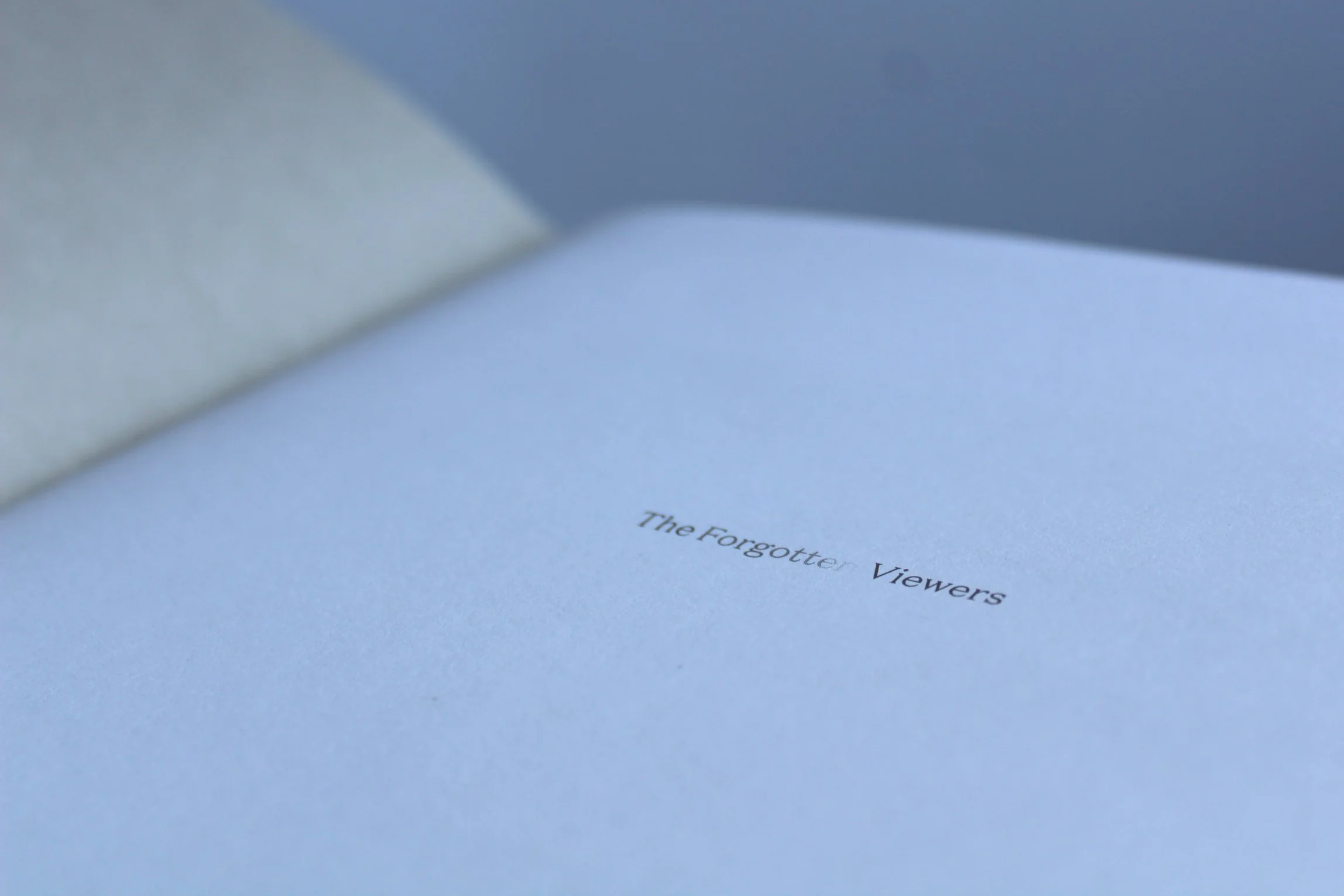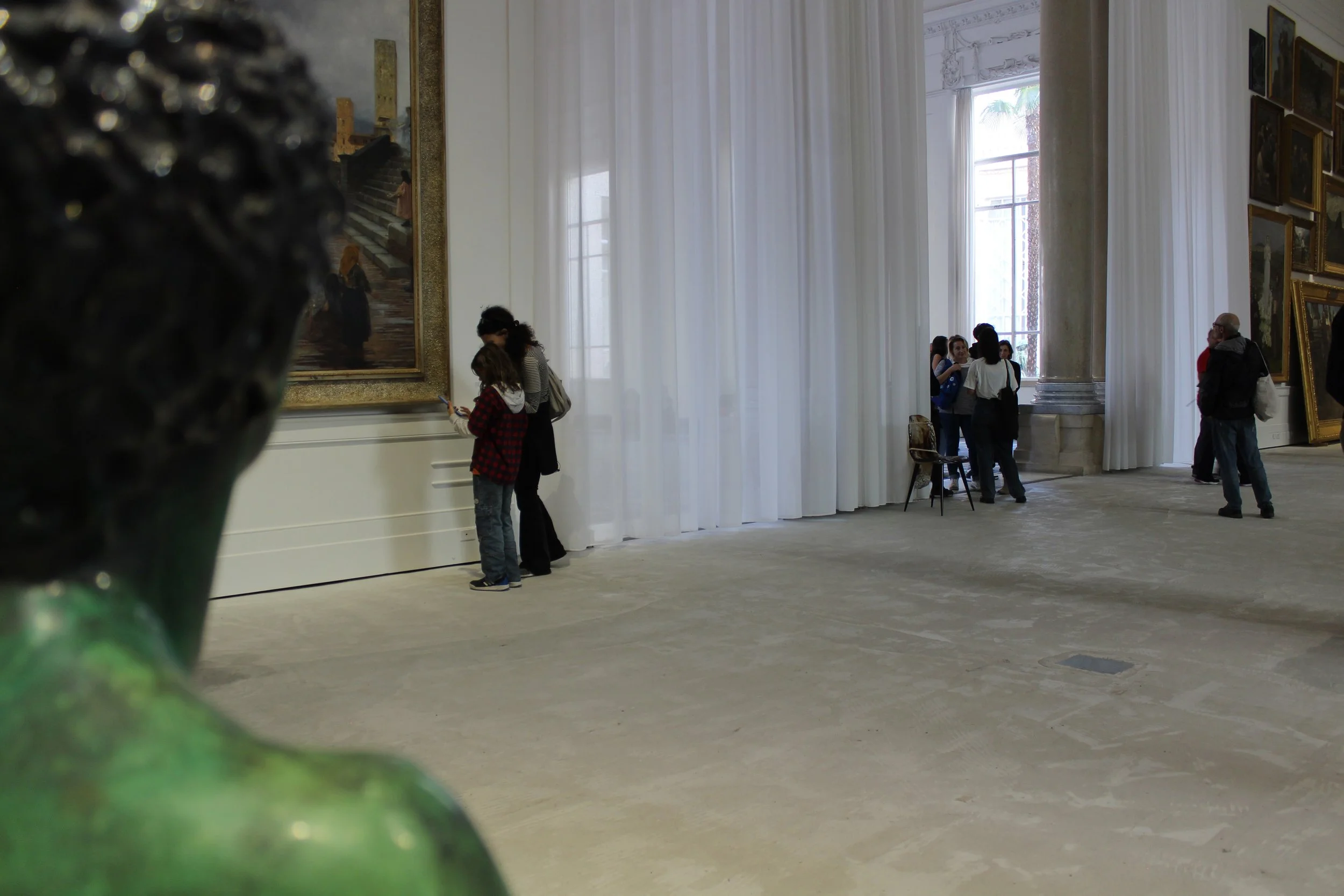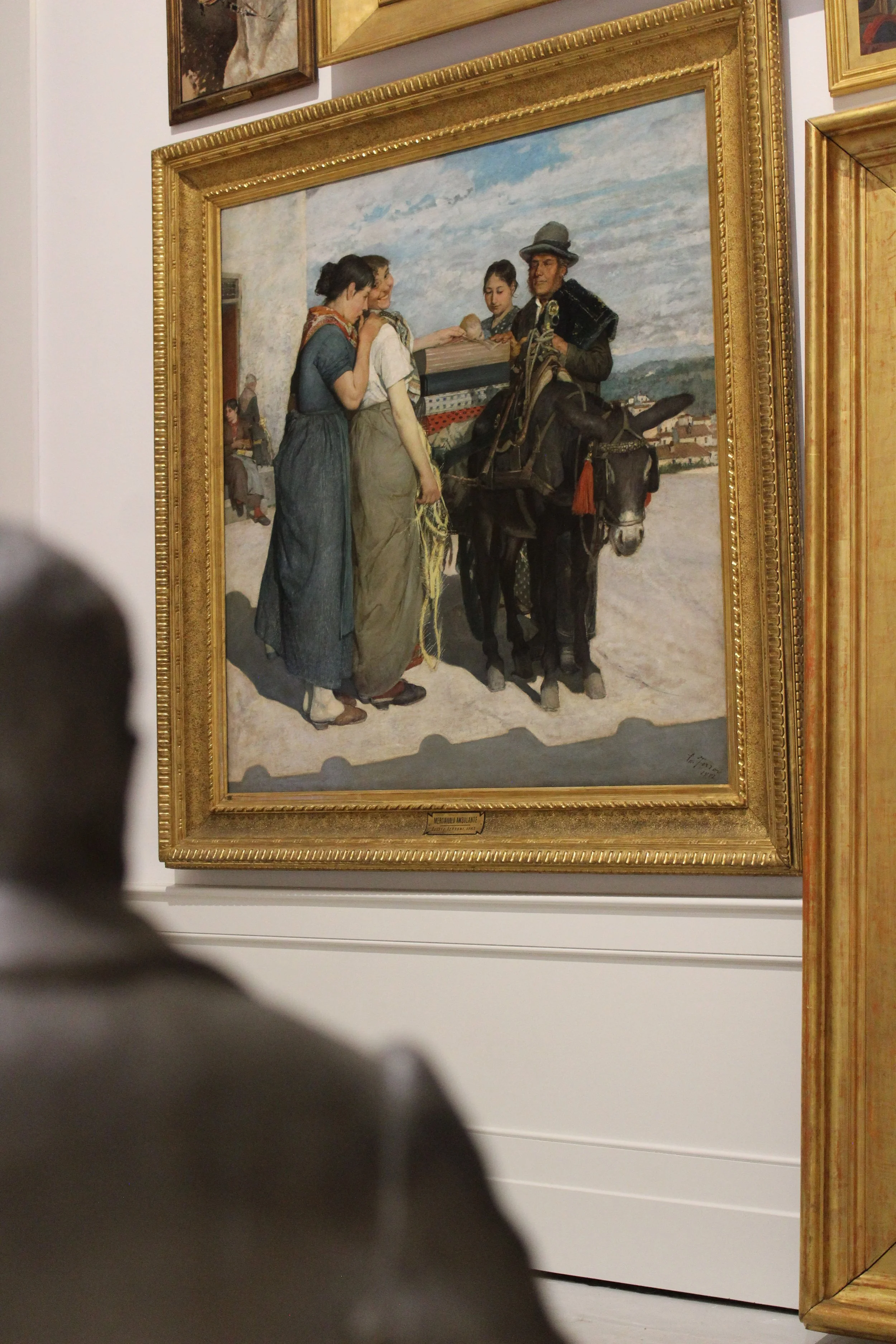
The Forgotten Viewers
Purpose & Goal.
Purpose & Goal.
The concept for this book is to experience the museum from the statues’ point of view. This was born from the feeling I got when walking through the museum–– that I was detached from the crowd, in a sea of people but alone. I realized that statues are always viewing the museum singularly. But we never really consider them as viewers in the first place. They also contrast the way we take in the museum: always from a static point of view rather than moving through the space. The Galleria Nazionale d'Arte Moderna museum is set up in a unique manner and pushes the idea of the statues as viewers. In my eyes, they are set up in a way that makes them look like they are admiring or interacting with the rest of the exhibit. This Re Reading a Collection is my own editorial exhibit of the existing pieces in The Galleria Nazionale d'Arte Moderna.
The Forgotten Viewers is my capturing of a feeling of loneliness and viewing a museum from a perspective we don’t normally consider.
Process.
Process.
I titled my book The Forgotten Viewers based on the above observations. The title page is the only clue as to what you will be viewing inside the two covers. Each image is framed the same way. The head and shoulder in the corner of the image so as to “see” from their perspective, but also giving the viewer the opportunity to recognize the concept. Considering statues are always seeing from a singular viewpoint, I wanted to give a variety of images. I wanted to convey a series of emotions through the statues’ detachment from a typical viewer. They see couples walking through the building, admire art in solitude, witness groups of people blurring past them, and even interact with the people around them.
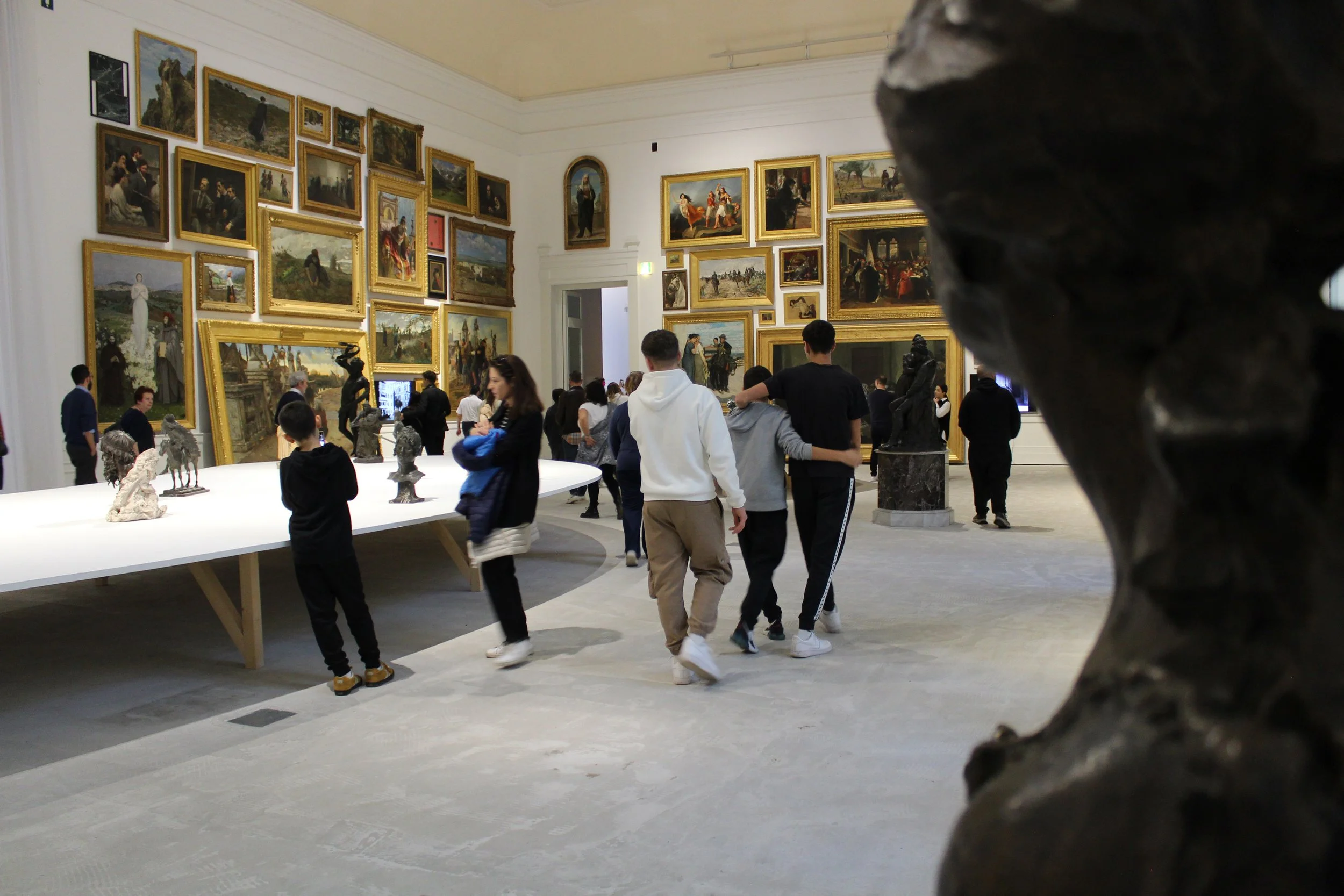

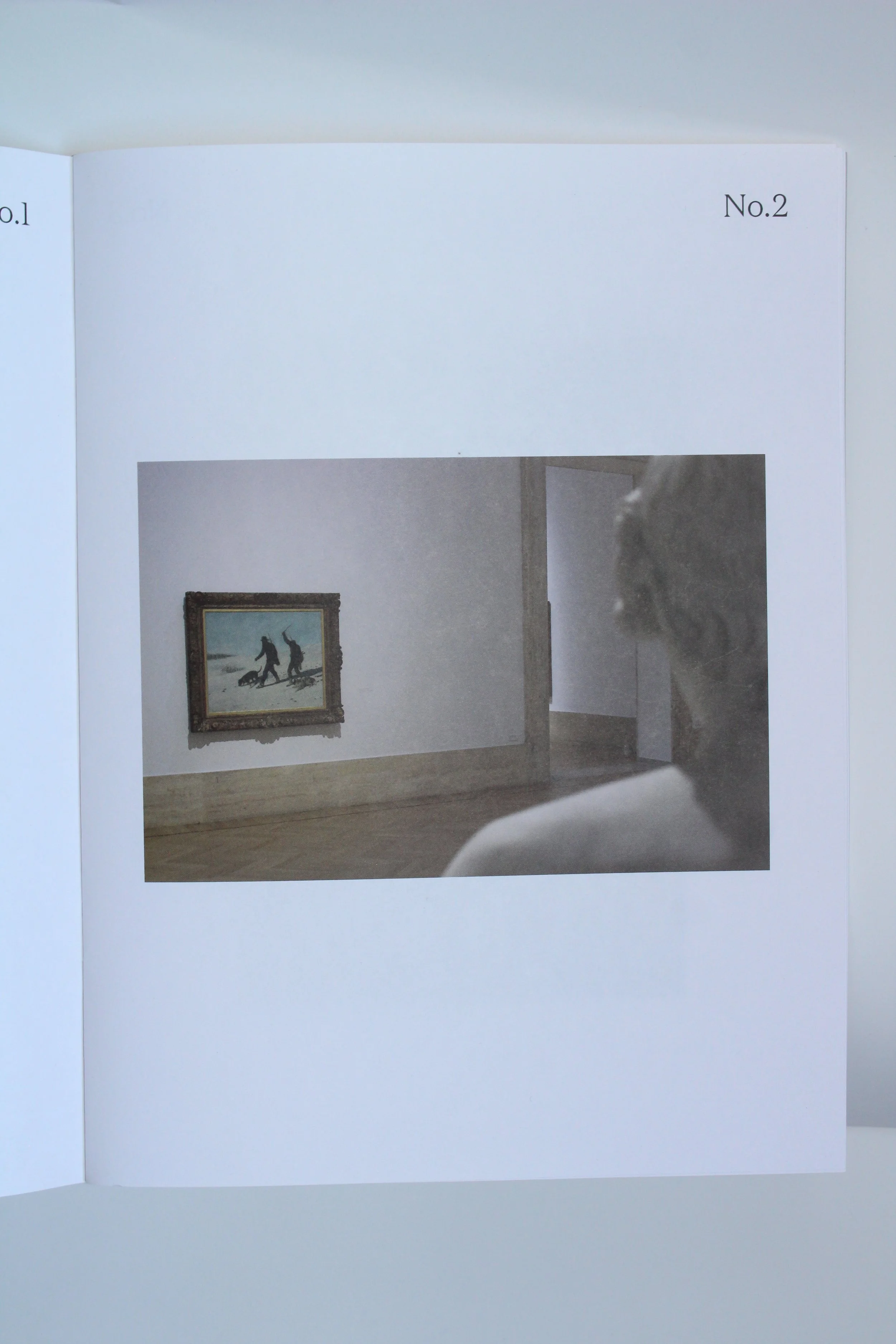
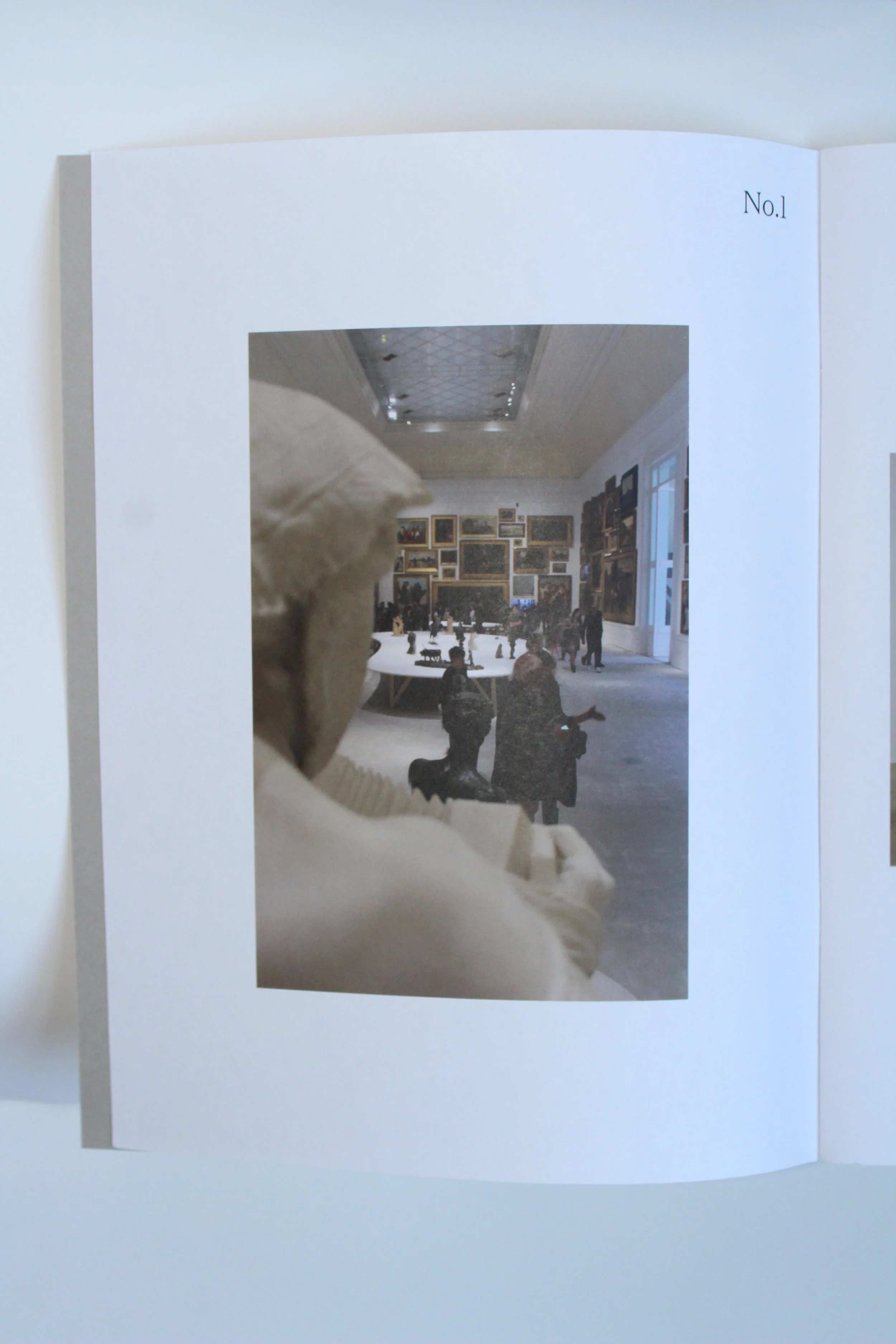


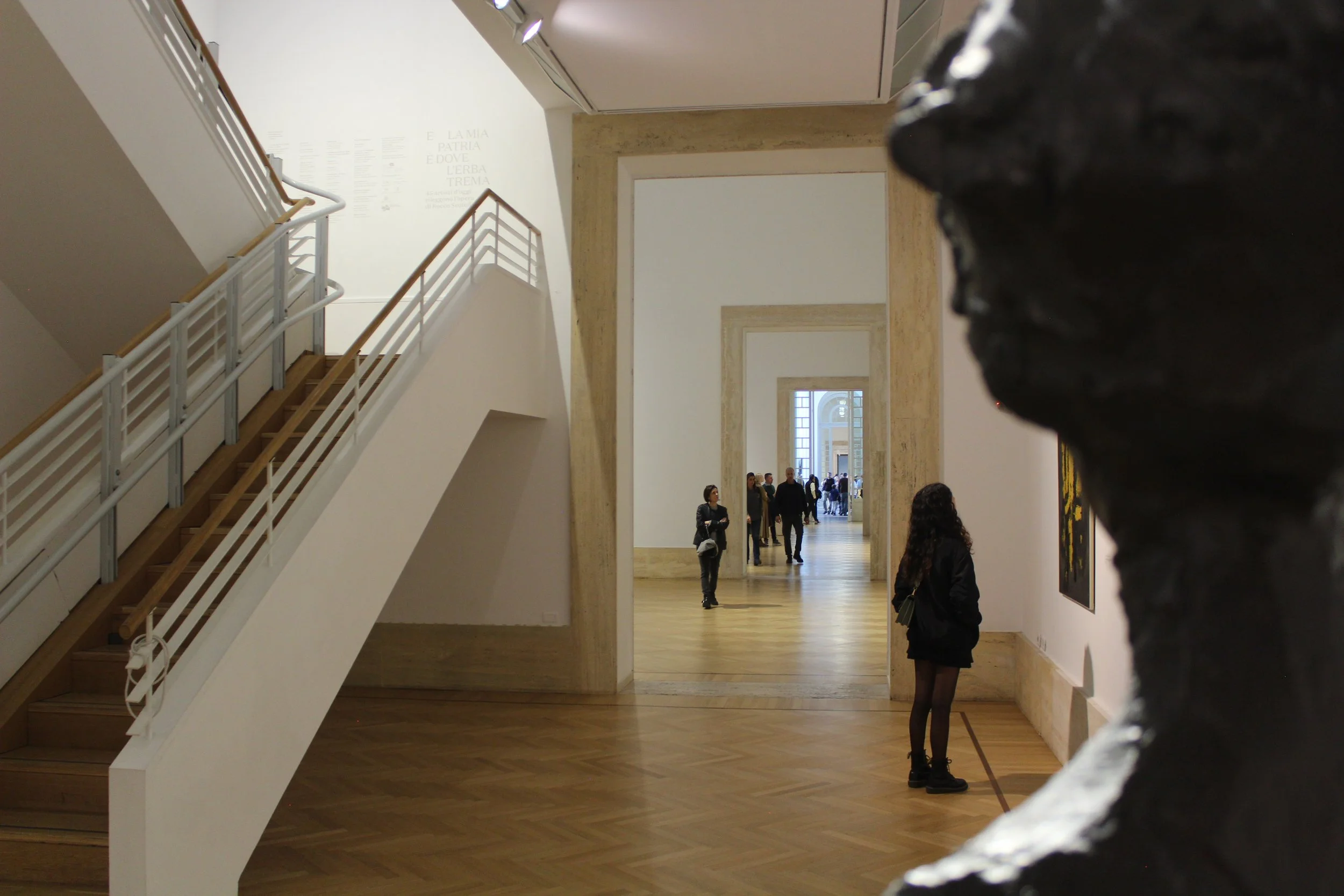
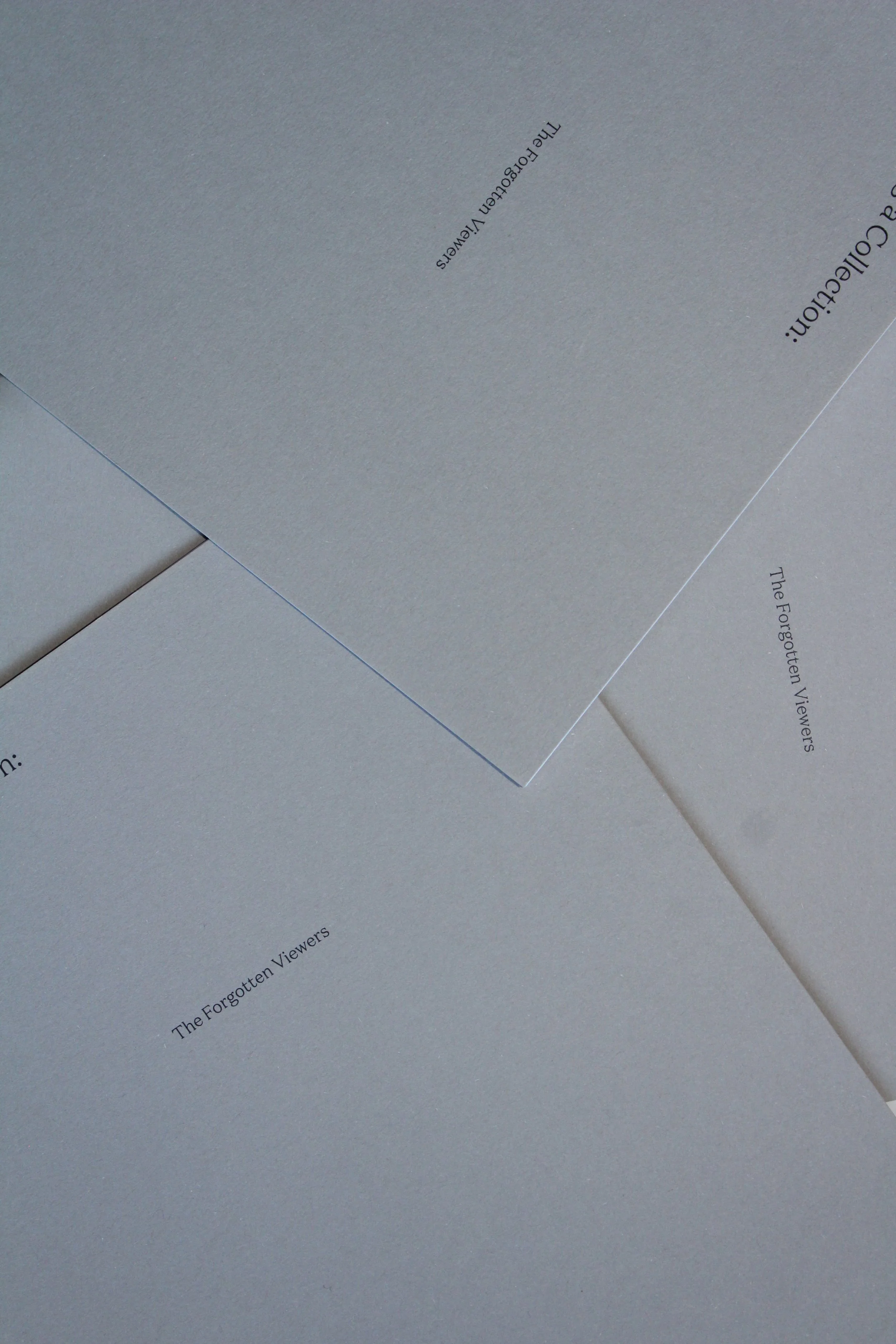
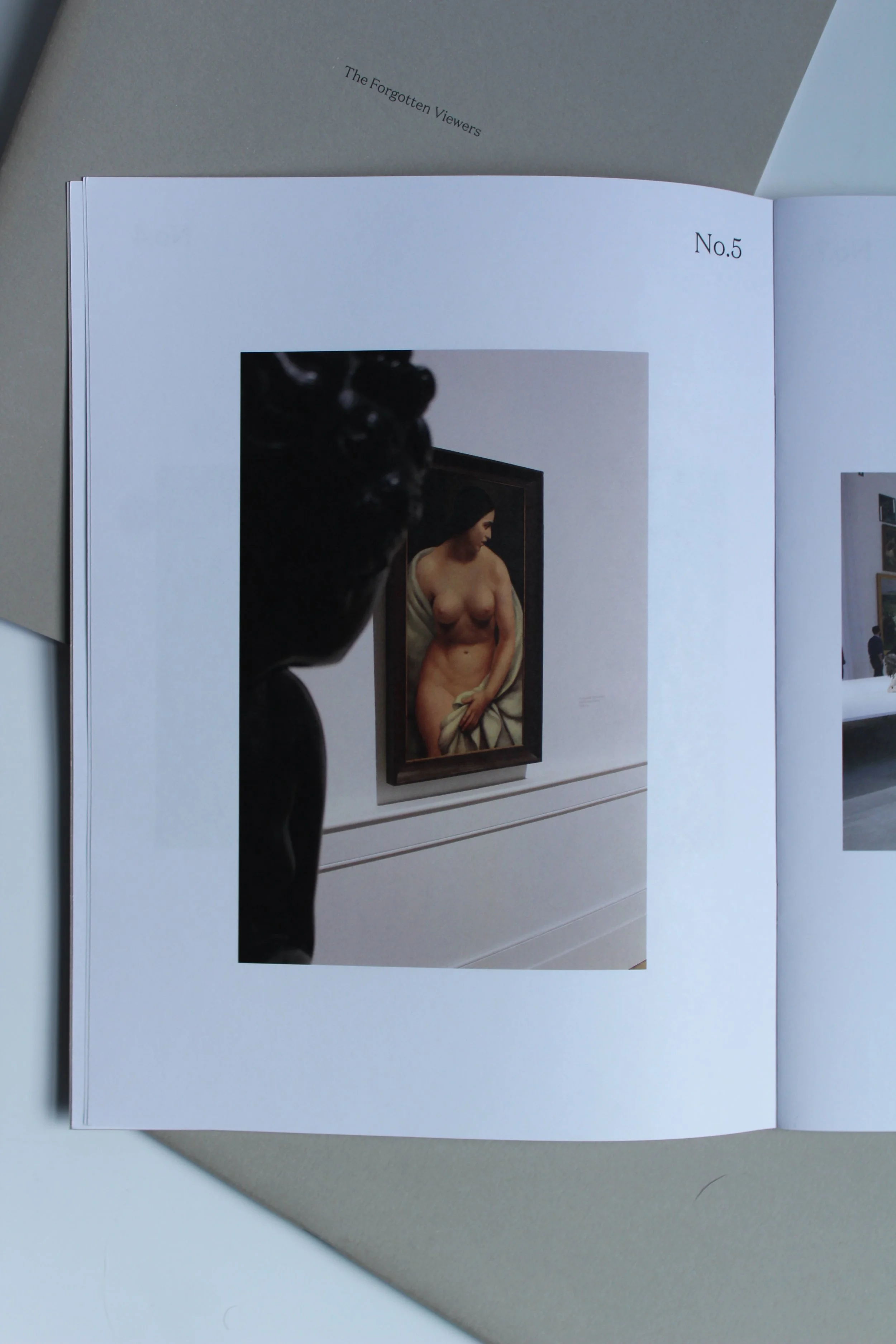
This examination of works in the Galleria Nazionale d'Arte Moderna is an editorial exhibit highlighting a point of view that we as people don’t normally consider.
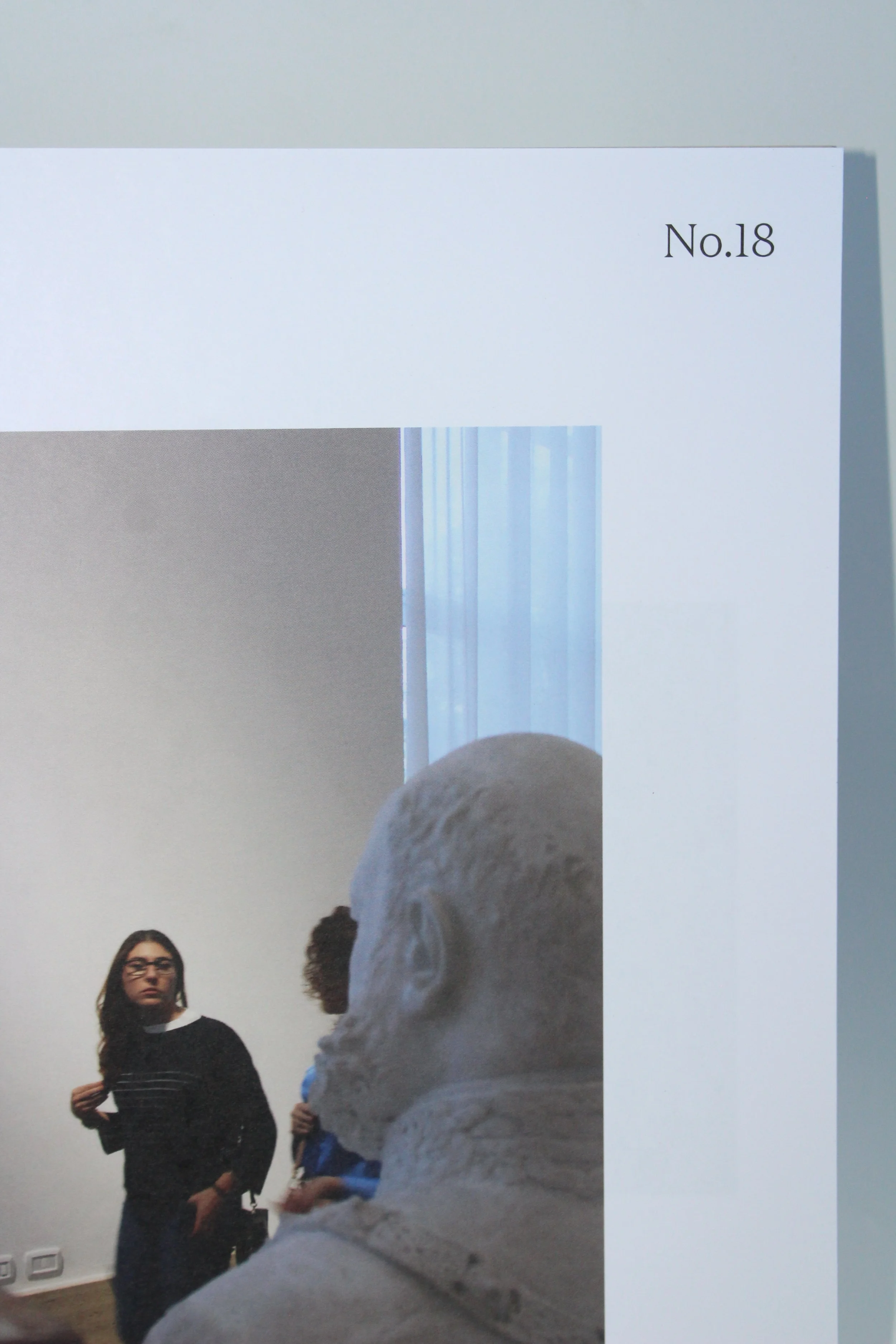
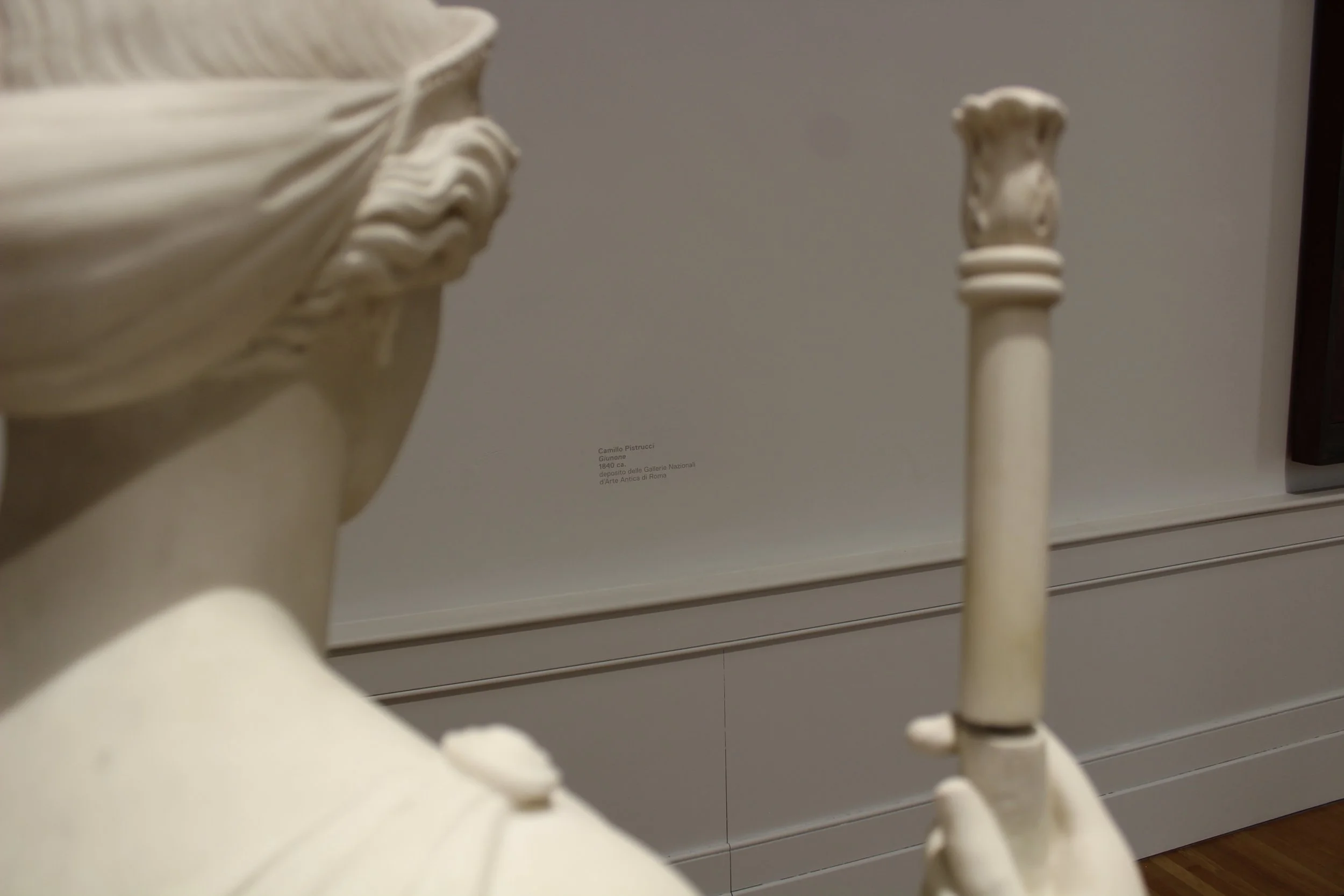

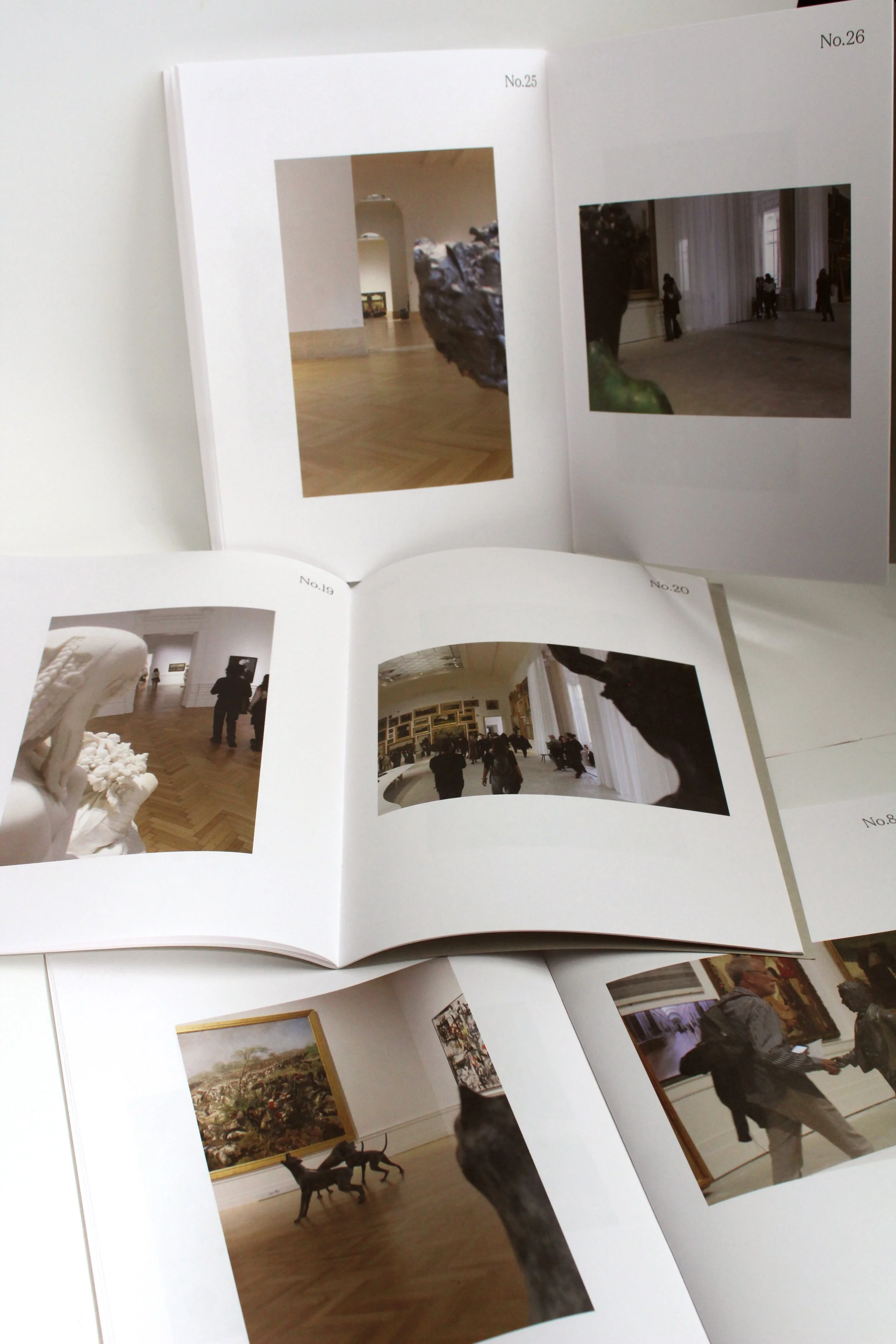
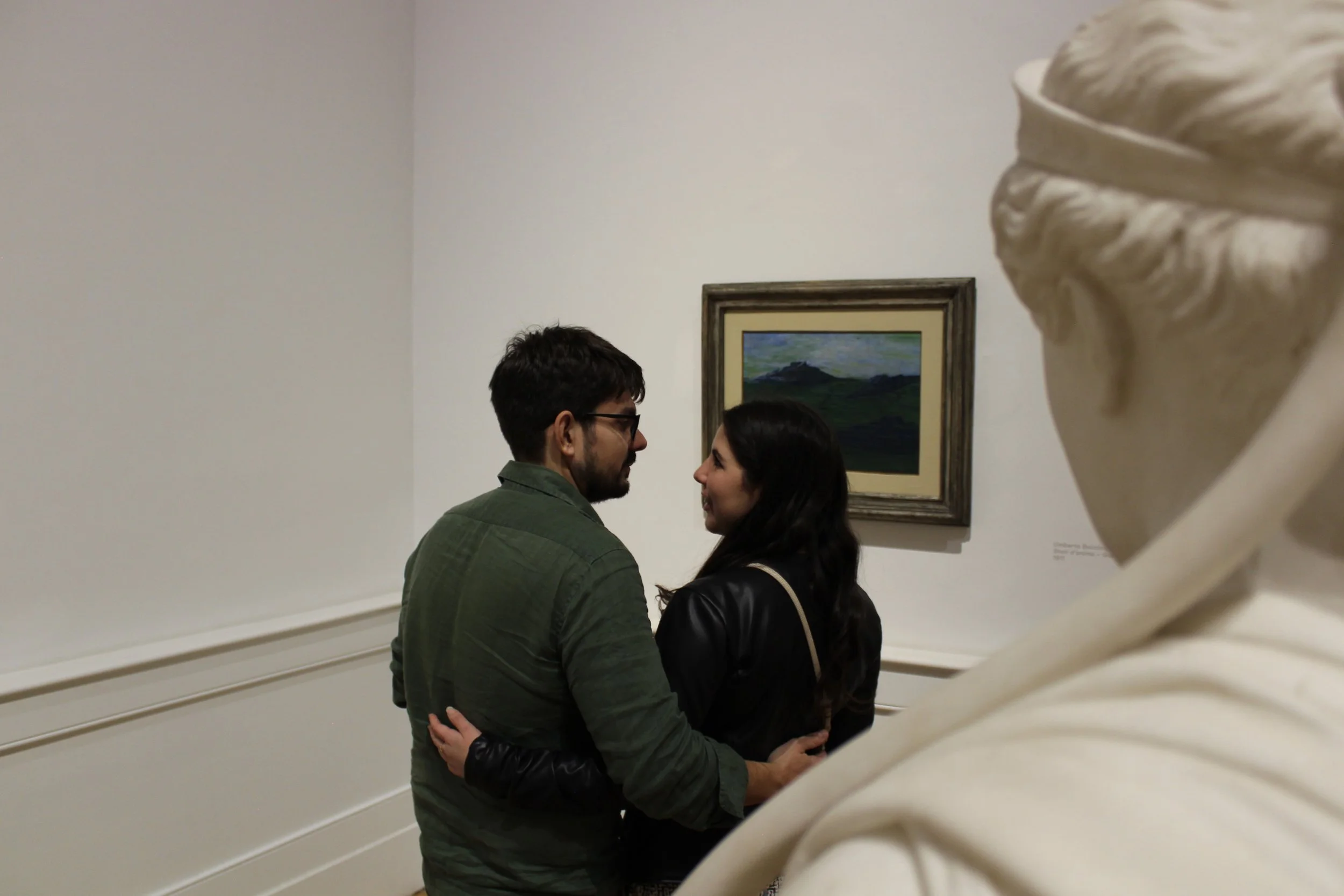
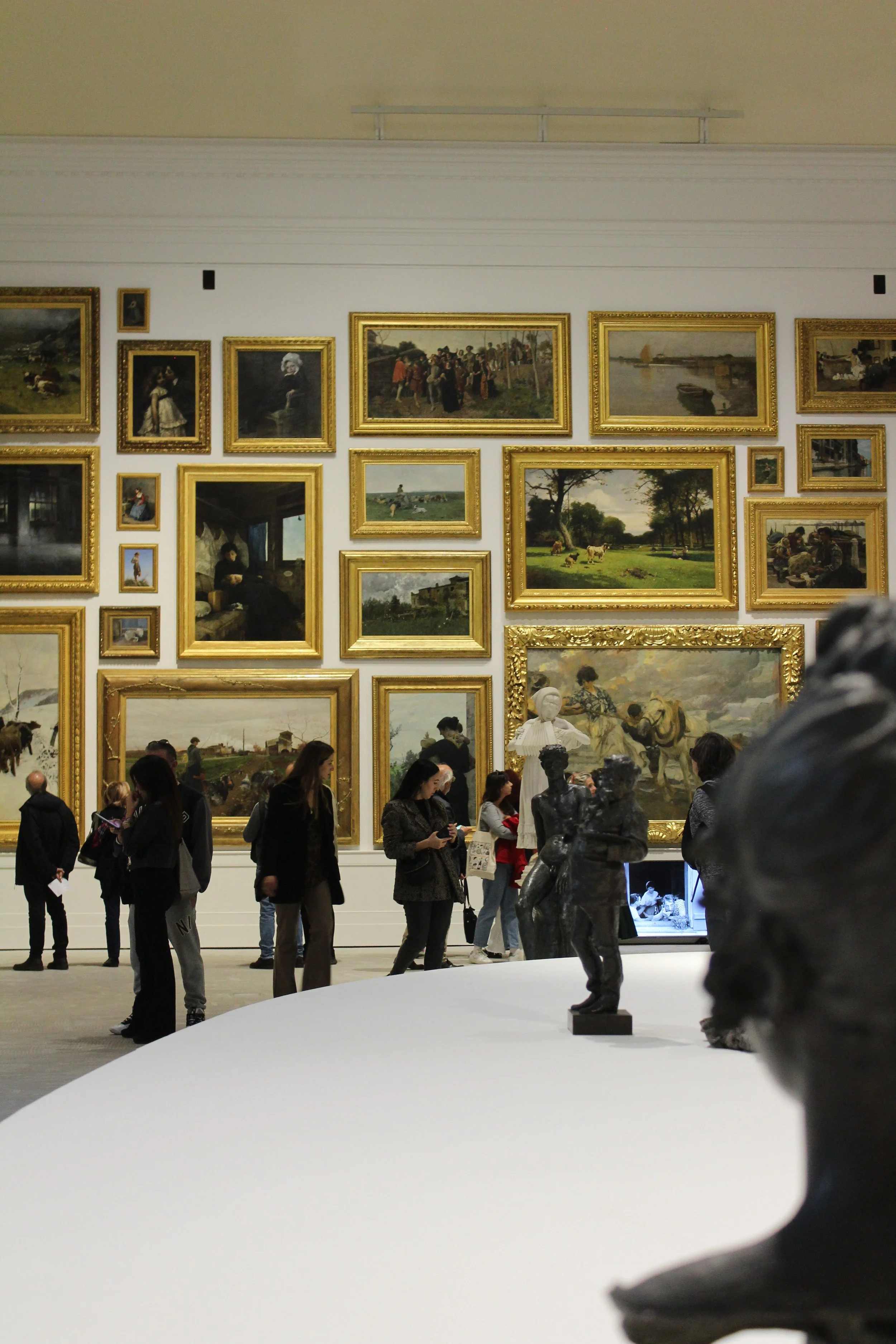
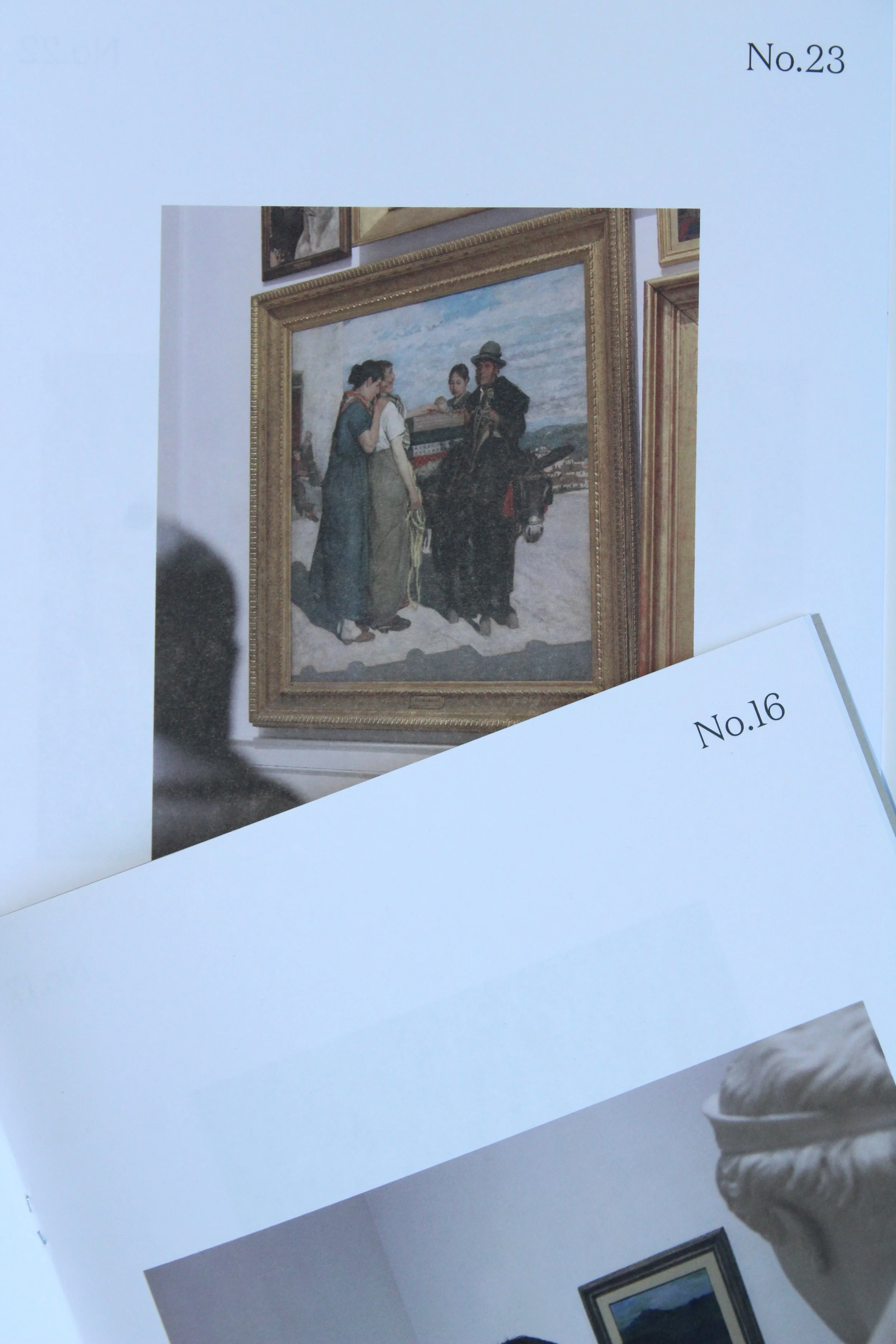

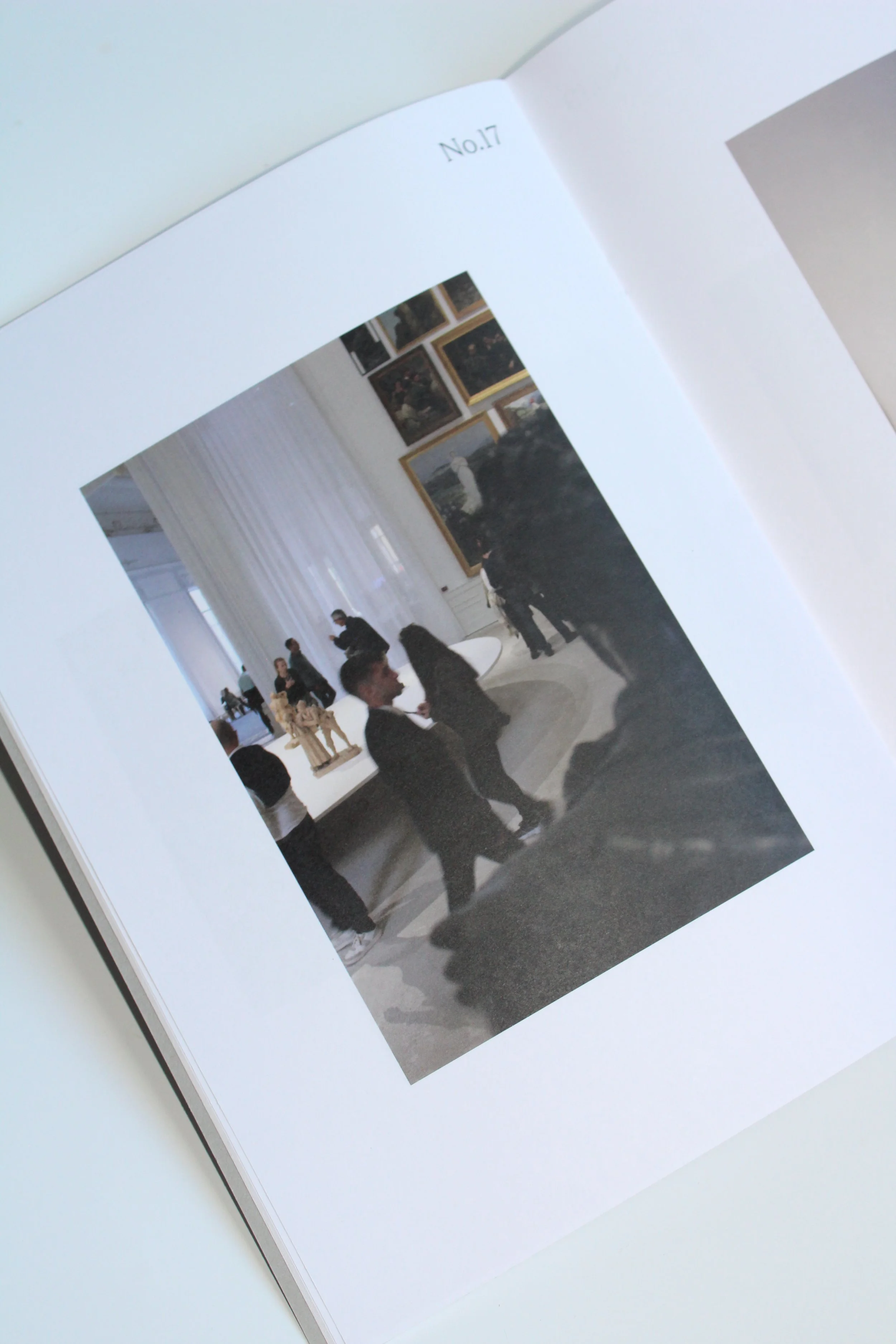
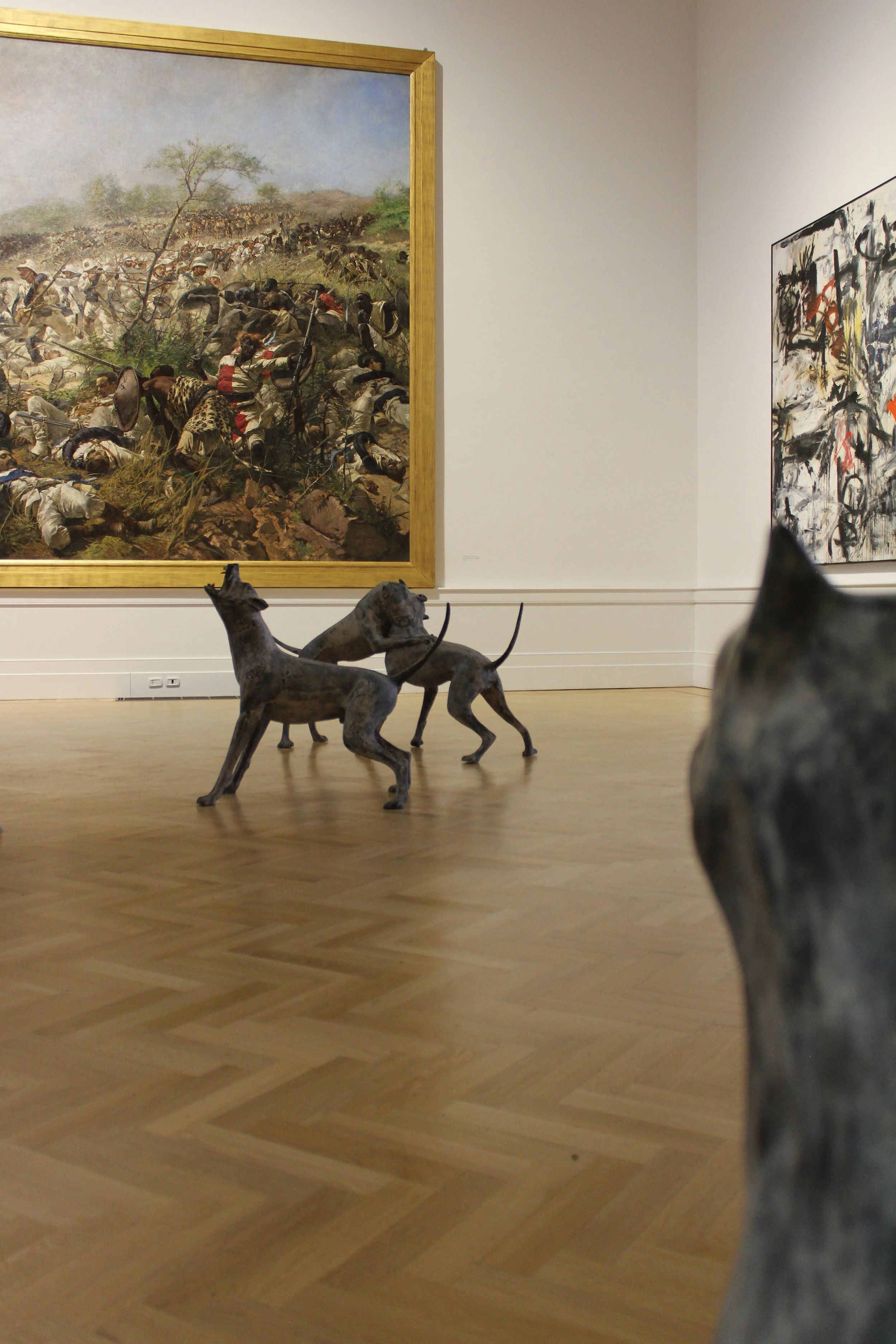
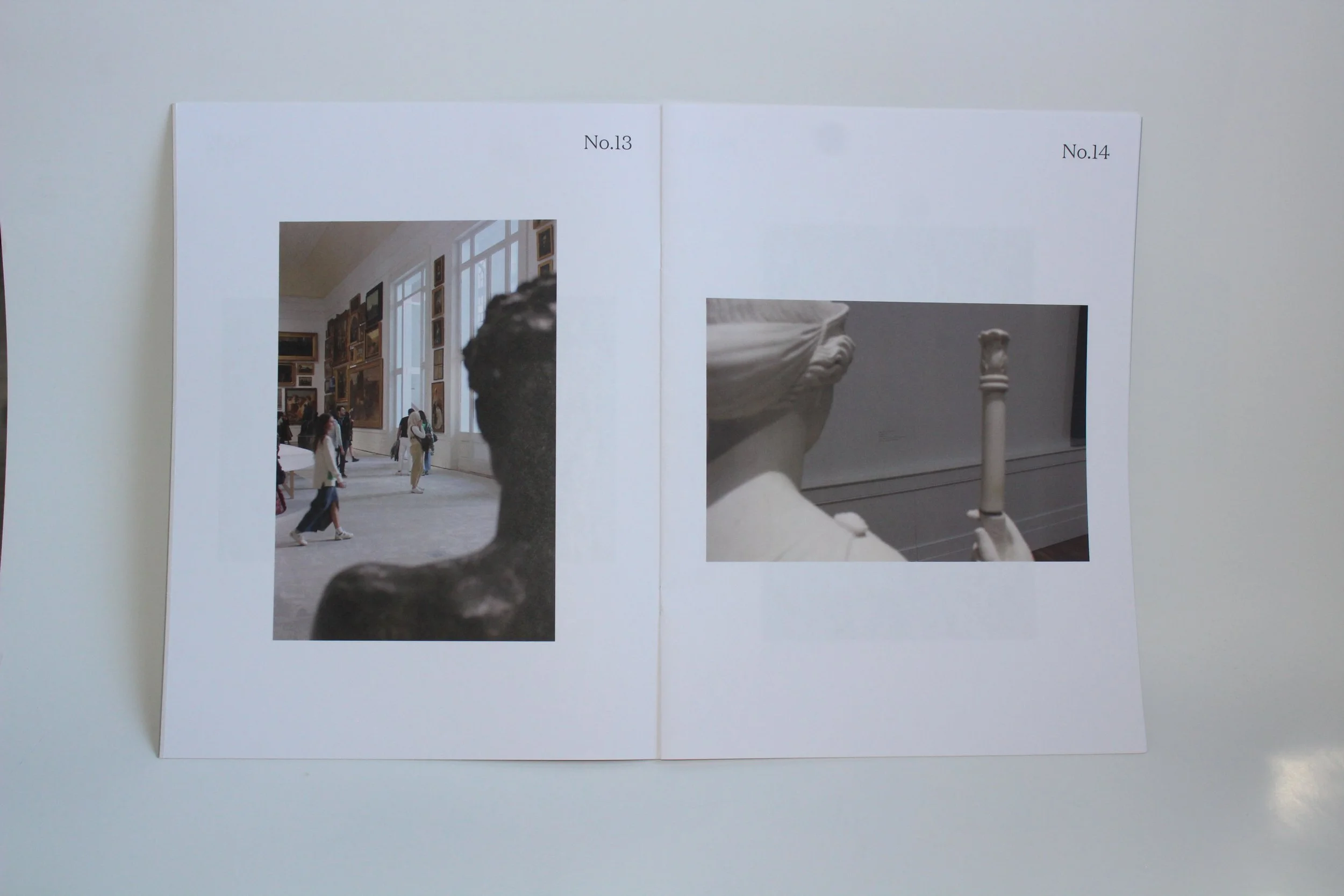
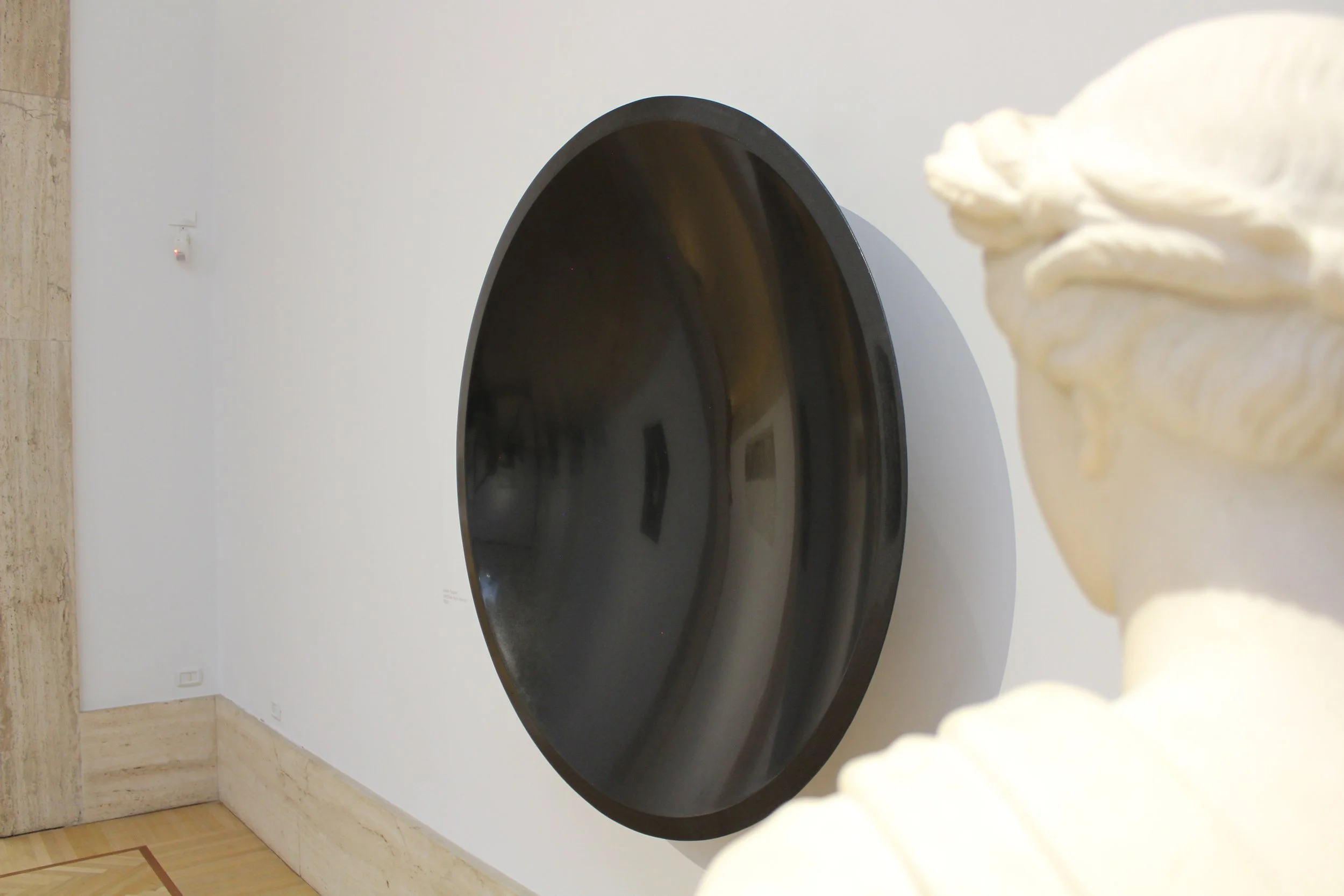

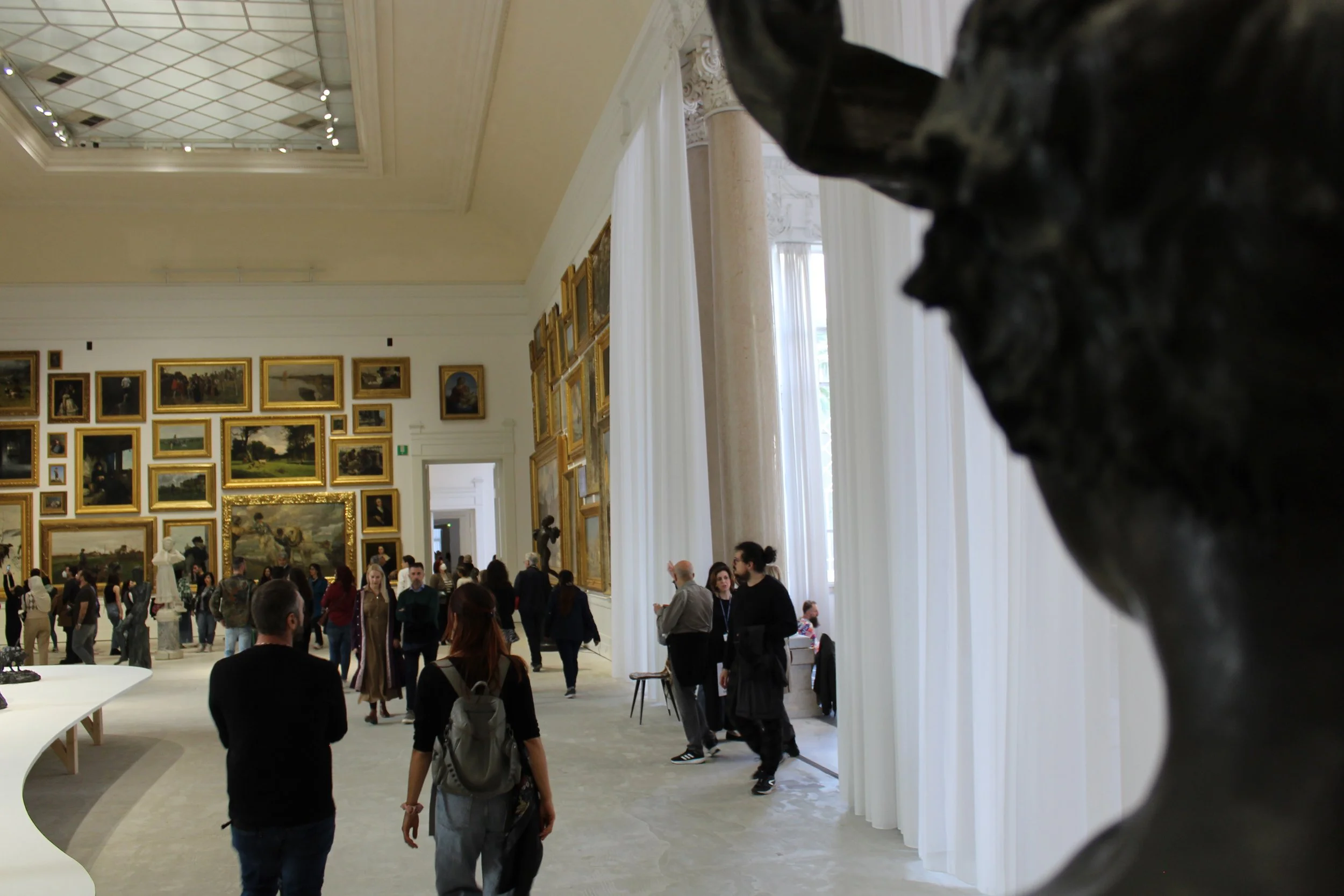
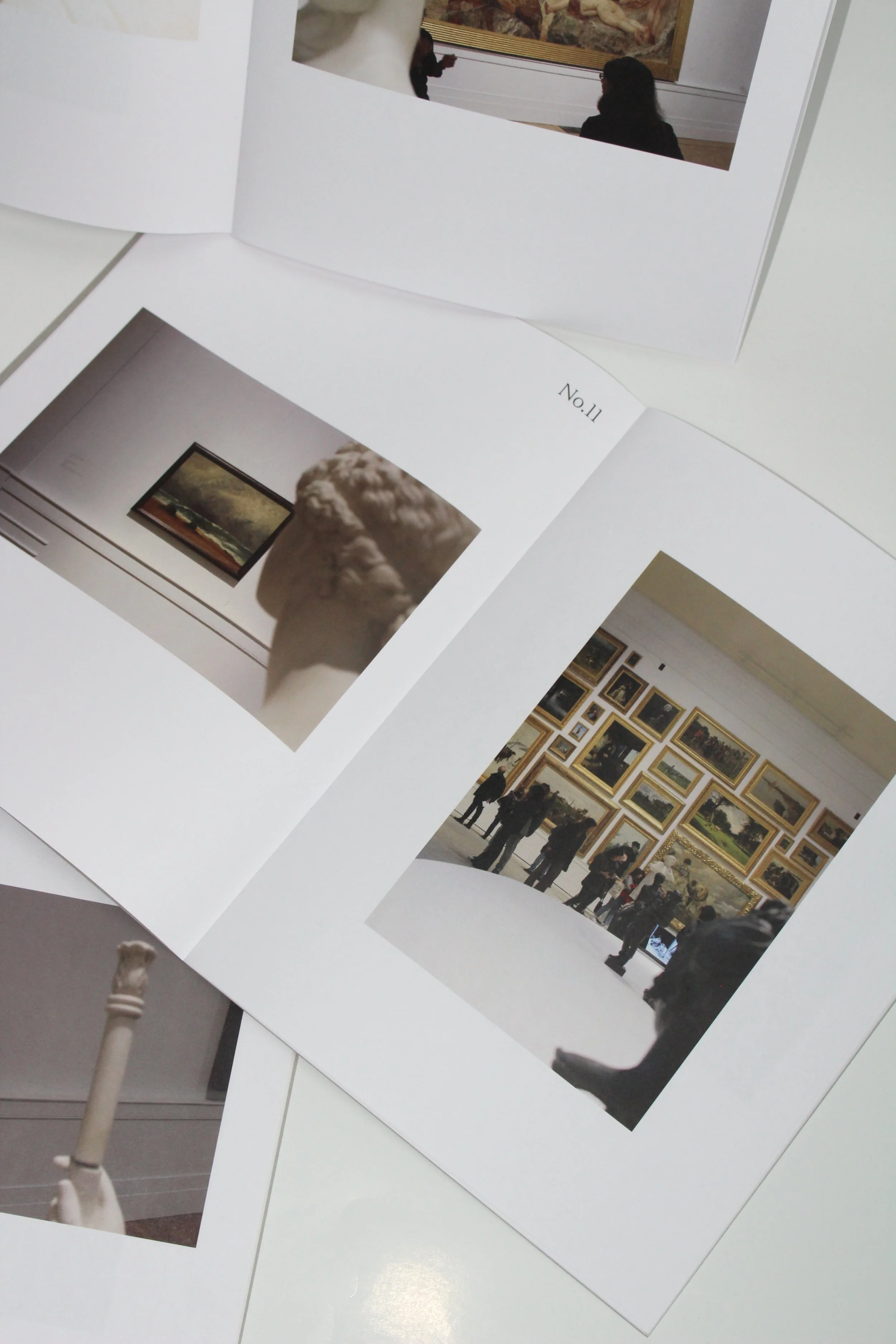

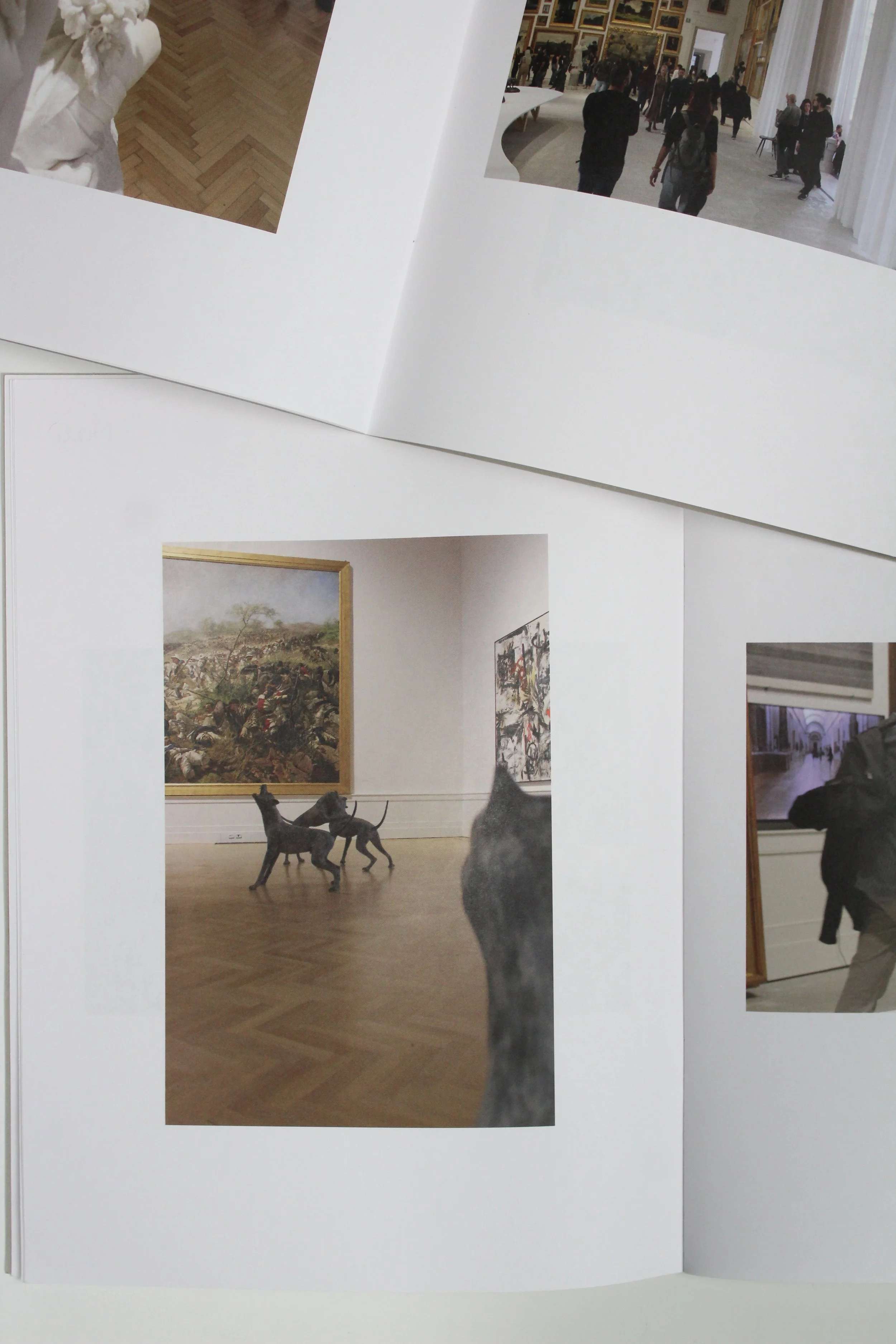
The Systems at Play.
The structure of the book is not the most important part, as I wanted the concept and images to speak for themselves. To give a little form to the book I used two systems: a numbering system that corresponds to an archive in the back of the book and a system of photo patterns to space out vertical and horizontal images. The numbering system allows you to connect the point of view of the statue to an image of the statue–– or what you would see. I found this to be a nice contrast and a way to tie together the typical perspective of a viewer to the experience of the statues. The photo pattern system isn’t meant to be noticed by the viewer, but rather a way for me to construct the book by giving a variety of images evenly spaced throughout.
This is a glance through of the book. Notice how horizontal and vertical images are intentionally spaced throughout. The numbering system is revealed to coordinate with an index of photos in the back. Here, readers can connect the statue’s perspective with the statue itself. The systems in place are very subtle, but they are intentionally in place to keep viewers engaged.
My Favorites.
These are a few of my favorite shots. When walking throughout the museum and noticing statues, they all seemed to have different emotions. Then when I came to learn what they saw, it became more clear. I hoped to capture that in the images I present in the book. These are the most beautiful shots to me either because of the art in them or my concept at play, I just wanted to give them their own category.




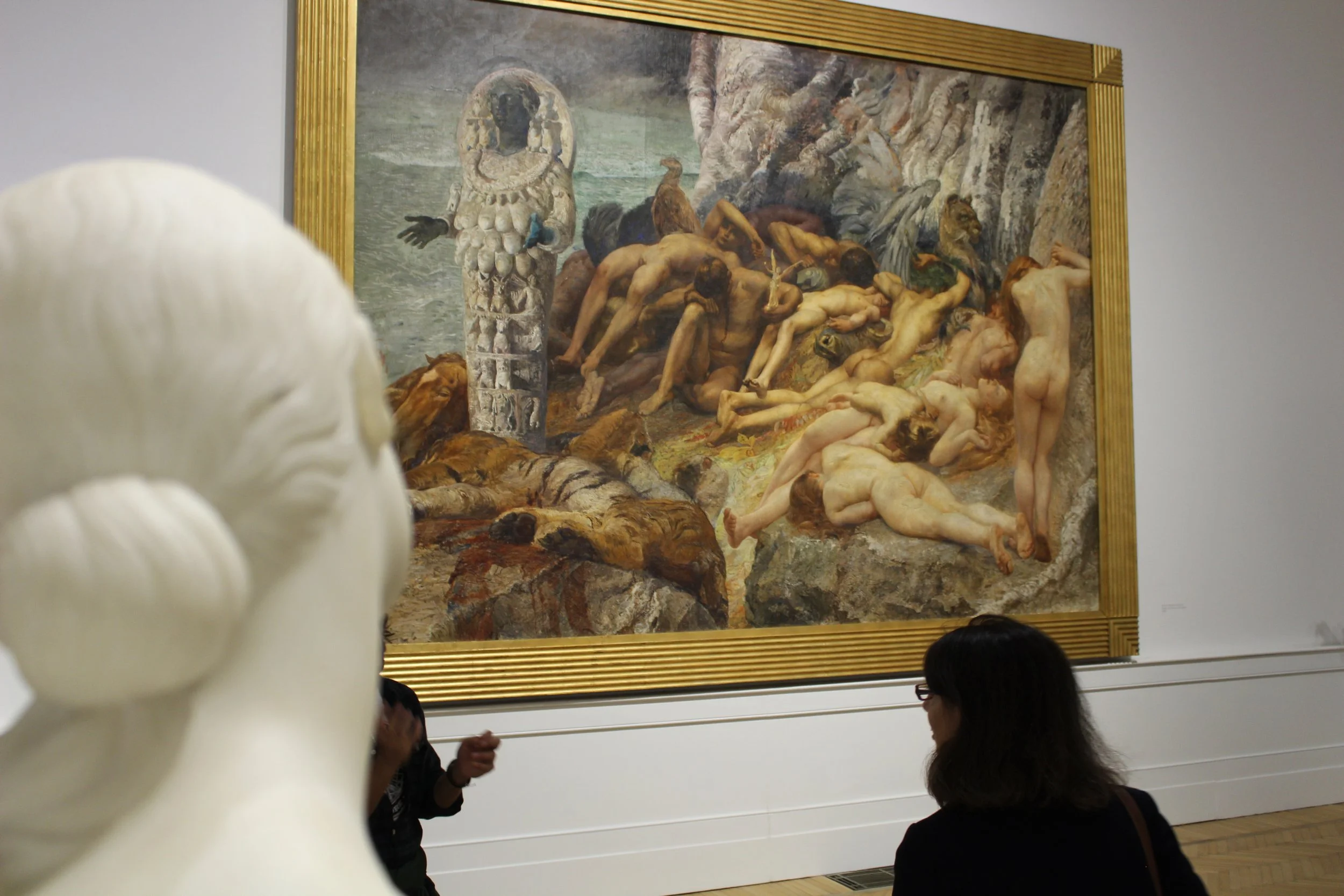
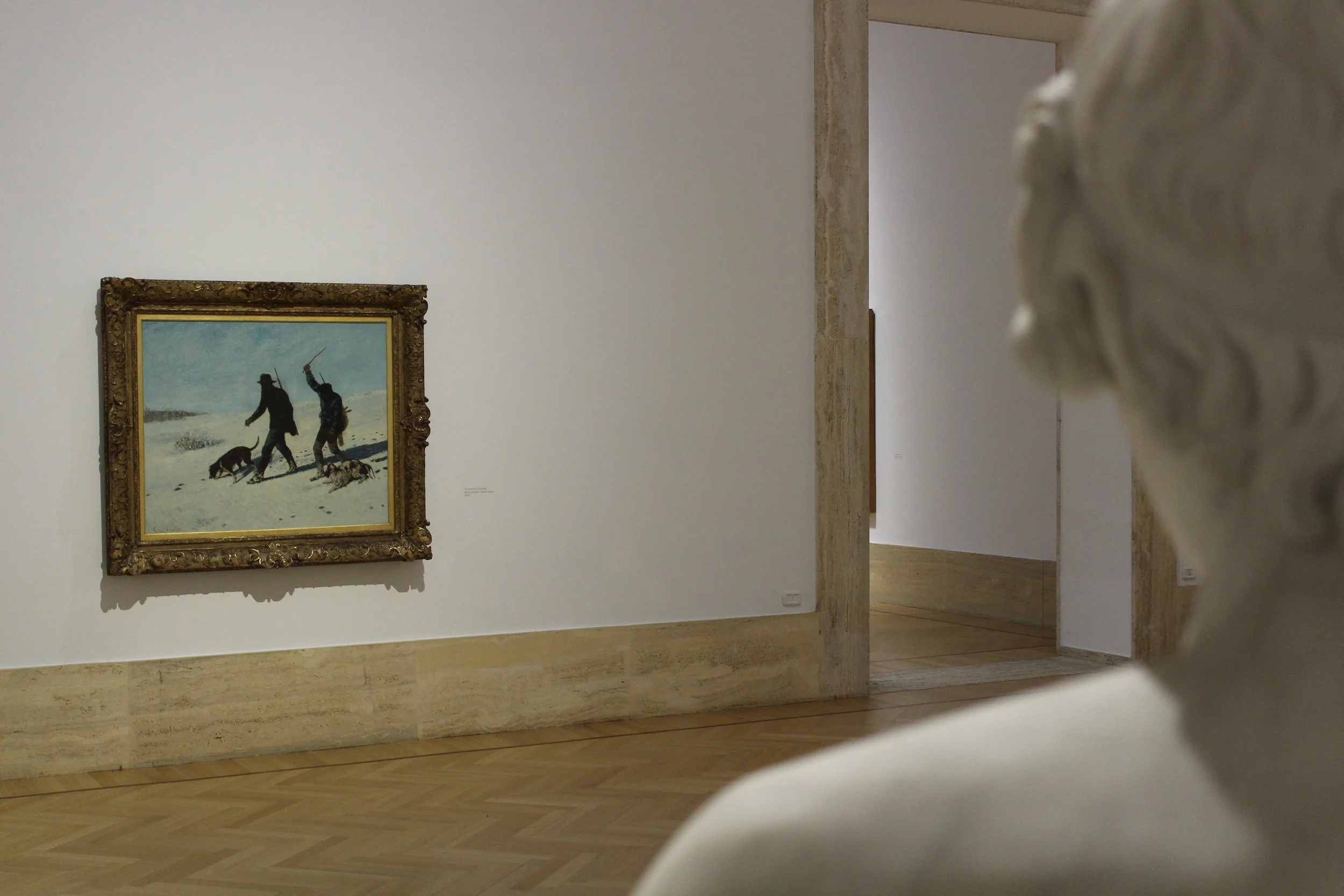
reflection.
reflection.
At first I was overwhelmed with all the possibilities for this project. I was interested in textures and I even began this project by completely ignoring the art in the museum and wanting to create an abstract exhibit. Once I had spent a few hours in the museum I noticed that the way I was viewing everything was similar to the statues and my project took off from there.
This project taught me that strong and emotional concepts don’t need to have words. I thought the concept may be too abstract and that it would need a thorough explanation to be appreciated. I have since realized that the absence of words is powerful. Images speak for themselves and they draw people in. I gained a lot of confidence in my own process during this project. I felt that my decisions and interests were explanation enough and that gave me more confidence in my ability to rely on myself.

